Cholesterol Drug Environmental Impact Comparison Tool
This tool compares the environmental impact of different cholesterol-lowering medications based on life-cycle assessment data. The carbon footprint shown is measured in kg CO₂-equivalent per kilogram of active pharmaceutical ingredient (API).
Key Insight: Ezetimibe has a higher environmental footprint than many statins due to its manufacturing process that relies on palladium catalysts and large volumes of organic solvents.
Carbon Footprint
Key Emission Sources
Palladium catalyst, organic solvents, high-temperature reactions
Carbon Footprint
Key Emission Sources
High-temperature cyclization, solvents
Carbon Footprint
Key Emission Sources
Fermentation step, lower energy demand
Carbon Footprint
Key Emission Sources
Complex chiral synthesis, solvent recovery
Which cholesterol medication has the lowest environmental impact?
Note: Environmental impact is only one factor in medication choice. Discuss with your healthcare provider which medication is most appropriate for your health needs.
- 40 Ezetimibe's production generates 40 kg CO₂-eq per kg of API
- 22 Simvastatin has the lowest carbon footprint at 22 kg CO₂-eq per kg of API
- 60% Solvent recovery systems can reduce solvent emissions by up to 60%
- 75% Pilot studies show up to 75% API recovery from unused tablets
When you swallow a pill to lower cholesterol, you probably don’t think about the trail it leaves behind. Ezetimibe is a cholesterol‑lowering medication that blocks the absorption of dietary cholesterol in the intestines. It’s prescribed for patients who need extra LDL‑cholesterol control alongside statins or as a stand‑alone therapy. But producing that tiny tablet and discarding it after use creates a hidden ecological footprint.
Why the Production Process Matters
Pharmaceutical synthesis is energy‑intensive. A 2023 study by the European Medicines Agency on life‑cycle assessment (LCA) shows that the manufacturing stage can account for up to 70 % of a drug’s total carbon footprint. For ezetimibe, the key hotspots are solvent use, heat‑driven reactions, and the purification of the active pharmaceutical ingredient (API).
Step‑by‑Step Look at Ezetimibe Synthesis
- Raw material extraction: The core scaffold starts from petro‑derived chemicals such as phenylacetylene. Mining and refining these feedstocks already emit CO₂ and generate waste water.
- Coupling reaction: A palladium‑catalyzed cross‑coupling attaches the sterol‑like side chain. This step requires reflux temperatures above 150 °C and large volumes of organic solvents like dichloromethane.
- Hydrogenation: The double bond is reduced under high‑pressure hydrogen, demanding both electricity and compressed gas.
- Purification: Crystallization and chromatography strip away impurities. Each batch can use 5-10 L of solvents per kilogram of API, which often end up as hazardous waste.
- Formulation: The purified API is blended with excipients, compressed into tablets, and coated. Energy is consumed in granulation and drying ovens.
Environmental Hotspots in Production
- Energy use: The high‑temperature steps and compressors together consume roughly 12 MJ of energy per kilogram of ezetimibe API.
- Solvent emissions: Solvents contribute about 30 % of the process‑related greenhouse‑gas (GHG) emissions. If not recovered, they become volatile organic compounds (VOCs) that affect air quality.
- Water contamination: Waste‑water from washing reactors carries residual organics. Conventional treatment plants may not fully break them down, leading to trace drug residues in rivers.
The cumulative effect translates to an estimated 40 kg CO₂‑equivalent per kilogram of ezetimibe API, according to the EMA LCA report.
Disposal Paths: From the Pharmacy Shelf to the Environment
Patients usually dispose of unused pills by throwing them in the trash or flushing them. Both routes have drawbacks:
- Landfill: Tablets degrade slowly. The polymer coating can trap the API, releasing it slowly into leachate that may reach groundwater.
- Flushing: Waste‑water treatment plants are not designed to remove all pharmaceutical compounds. Studies in the UK have detected ezetimibe residues at concentrations up to 0.05 µg/L downstream of treatment facilities.
These low‑level releases contribute to the growing cocktail of “pharmaceutical pollutants” that affect aquatic organisms, altering cholesterol metabolism in fish and invertebrates.
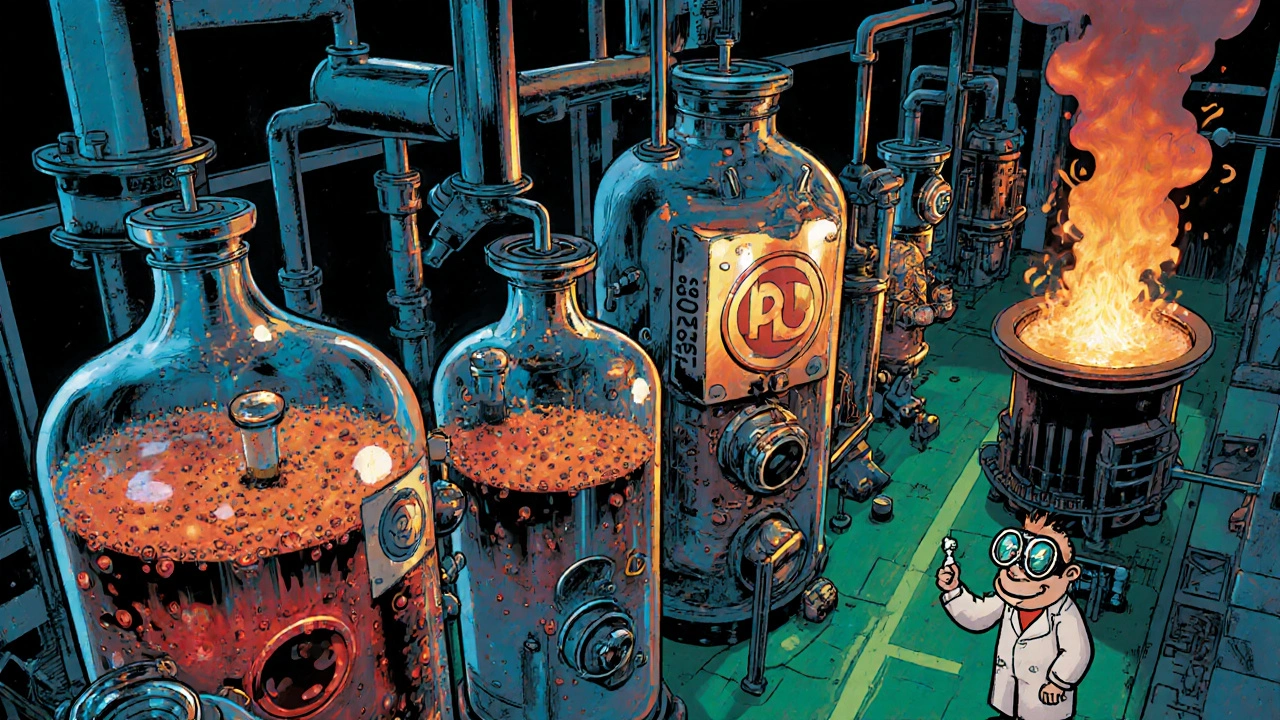
Life‑Cycle Assessment (LCA) Data at a Glance
| Drug | Manufacturing CO₂‑eq | Key Emission Sources |
|---|---|---|
| Ezetimibe | 40 | Palladium catalyst, organic solvents |
| Atorvastatin | 28 | High‑temperature cyclization, solvents |
| Simvastatin | 22 | Fermentation step, lower energy demand |
| Rosuvastatin | 35 | Complex chiral synthesis, solvent recovery |
These numbers show that while ezetimibe isn’t the worst offender, its footprint is higher than many statins because of the palladium‑mediated coupling and solvent‑heavy purification.
Mitigation Strategies: Turning the Tide
Pharma companies, regulators, and even patients can cut the ezetimibe environmental impact in several ways.
- Green chemistry redesign: Switching to water‑based reactions or using recyclable solid‑supported catalysts can slash solvent use by up to 60 %.
- Process intensification: Continuous flow reactors operate at lower temperatures and use less energy than batch reactors.
- Solvent recovery systems: Distillation loops capture and reuse >90 % of organic solvents, turning waste into a resource.
- Enhanced waste‑water treatment: Advanced oxidation (UV/H₂O₂) can degrade residual ezetimibe to below detection limits before discharge.
- Take‑back programs: In the UK, the NHS has pilot schemes where pharmacies collect unused meds for incineration at high temperatures, ensuring complete destruction.
- Regulatory pressure: The UK’s Medicines and Healthcare products Regulatory Agency (MHRA) now requires environmental risk assessments for new drug approvals, pushing manufacturers toward cleaner processes.
Policy Landscape: What’s Happening Globally?
Europe’s 2022 “Sustainable Pharmaceuticals” directive urges companies to report the carbon intensity of each API. The United Nations’ “Sustainable Development Goal 12” specifically calls out pharmaceutical waste as a target for reduction. In the United States, the FDA’s 2024 guidance on “Environmental Impact Statements for Drugs” mirrors these expectations.
For the UK, the 2025 “Green Pharmacy” initiative aims to cut drug‑related GHG emissions by 30 % by 2030, leveraging both industry reform and public education.
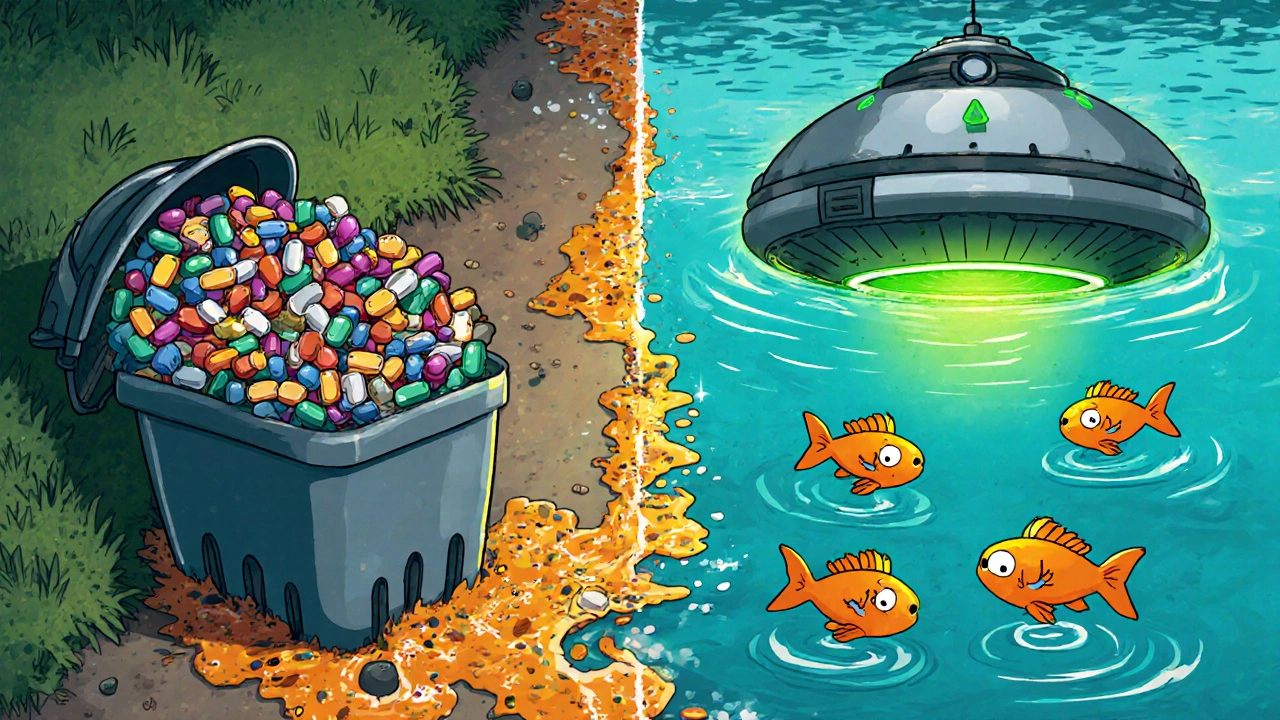
Practical Tips for Consumers
- Don’t flush: Use local pharmacy take‑back bins whenever possible.
- Store properly: Keep tablets in a cool, dry place to avoid degradation that could increase disposal frequency.
- Ask your doctor: If you’re on ezetimibe, discuss whether a lower dose or an alternative statin with a smaller footprint could work for you.
- Support eco‑friendly brands: Some manufacturers label their products as “green‑manufactured” after meeting solvent‑recovery targets.
Small actions add up, especially when millions of patients are on cholesterol‑lowering therapy worldwide.
Future Outlook: Towards a Circular Pharma Economy
Researchers are experimenting with “drug recycling” - extracting the API from unused tablets to be reformulated. Early pilots with ezetimibe show a 75 % recovery rate using supercritical CO₂ extraction, turning waste into a raw material for new batches.
If such technologies scale, the carbon cost of producing new API could drop dramatically, moving us closer to a truly circular pharmaceutical system.
Key Takeaways
- Ezetimibe’s production relies on energy‑intensive steps and large solvent volumes, leading to ~40 kg CO₂‑eq per kilogram of API.
- Improper disposal contributes to trace drug residues in water bodies, affecting aquatic life.
- Green chemistry, solvent recovery, and robust waste‑water treatment can cut emissions by over half.
- Regulatory frameworks in Europe, the UK, and the US are tightening, pushing manufacturers toward sustainability.
- Consumers can help by using take‑back programs, asking about lower‑impact alternatives, and supporting eco‑labelled products.
How is ezetimibe manufactured?
The drug is synthesized through a multi‑step process that starts with petro‑derived chemicals, uses a palladium‑catalyzed coupling, hydrogenation, and extensive solvent‑based purification before being formulated into tablets.
What makes ezetimibe’s carbon footprint higher than some statins?
Key factors are the palladium catalyst, high‑temperature reactions, and large volumes of organic solvents that are often not fully recycled, all of which generate significant CO₂‑equivalent emissions.
Can unused ezetimibe tablets be recycled?
Pilot projects using supercritical CO₂ extraction have recovered up to 75 % of the API from unused tablets, but the method is still experimental and not widely available yet.
What should I do with leftover ezetimibe?
Take it to a pharmacy’s medication‑take‑back programme or follow local disposal guidelines. Avoid flushing it down the toilet.
Are there greener alternatives to ezetimibe?
Many statins have lower manufacturing footprints. Discuss with your healthcare provider whether a high‑intensity statin or a combination pill could meet your cholesterol goals with less environmental impact.
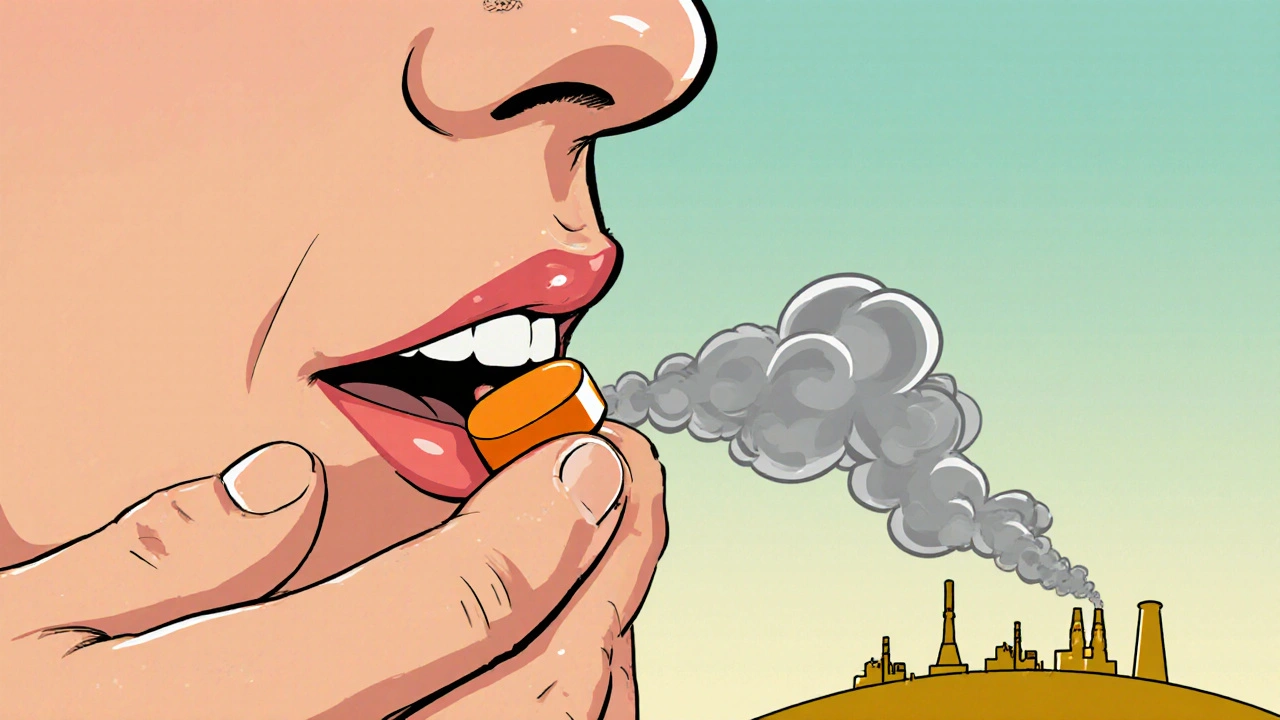
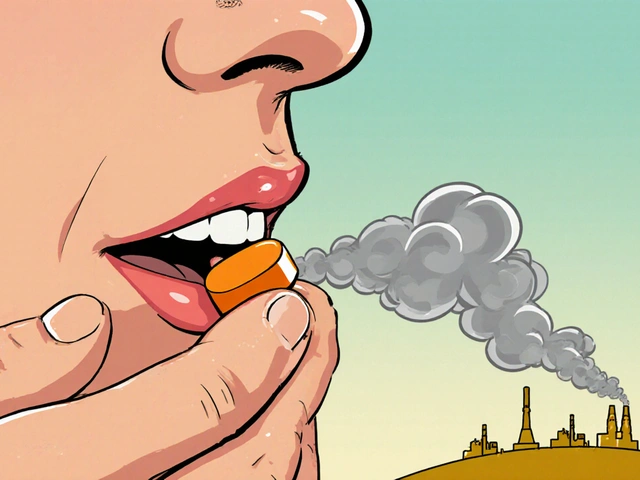
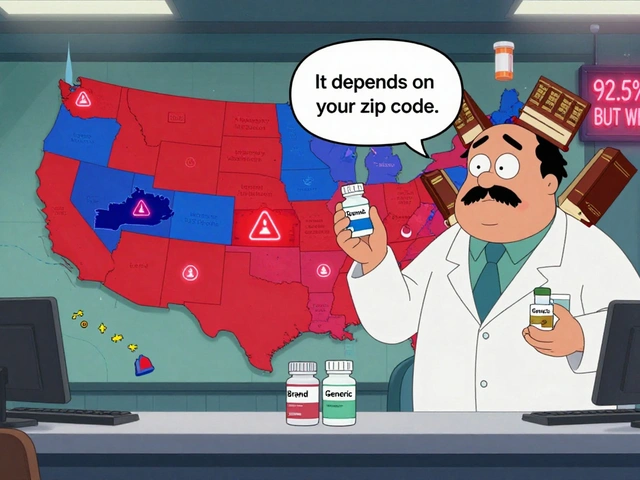
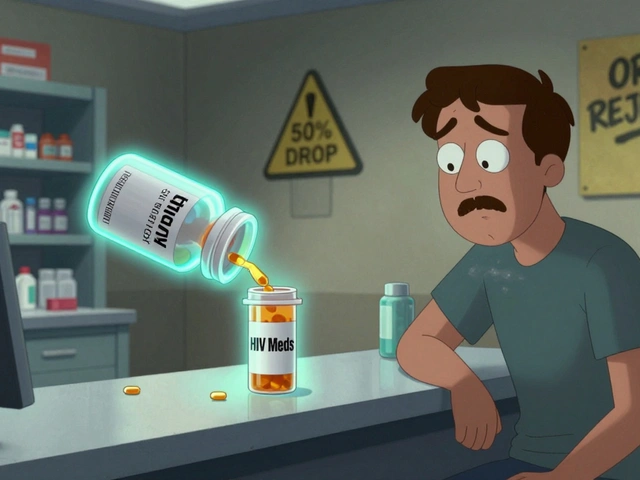

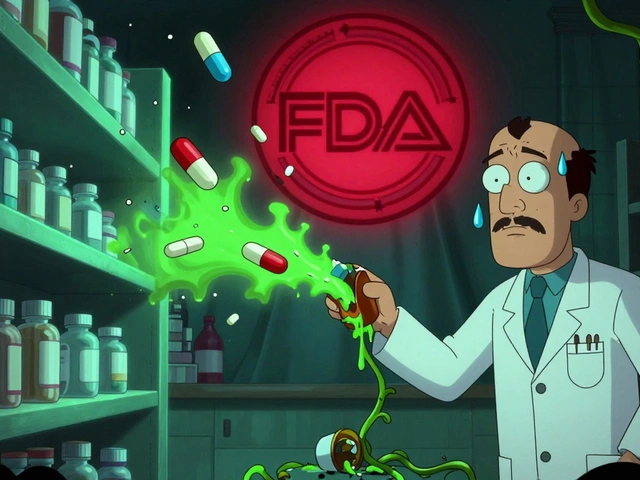

deepak tanwar
October 23, 2025 AT 12:22The pharmaceutical sector has long justified its carbon profile by pointing to life‑saving outcomes. Yet the manufacturing pathway of ezetimibe reveals a chain of energy‑hungry steps that merit scrutiny. The raw material extraction relies on petrochemical feedstocks, whose combustion already emits sizable CO₂. The palladium‑catalyzed coupling demands temperatures above 150 °C and sizable solvent volumes, both of which inflate the carbon ledger. Solvent recovery is often partial, leaving volatile organic compounds to escape into the atmosphere. Hydrogenation under high pressure consumes electricity and compressed gas, further adding to the footprint. Crystallization and chromatography, while purifying the API, waste several liters of hazardous solvents per kilogram produced. The subsequent formulation stage introduces additional energy consumption during granulation and drying. Altogether, the LCA cited by the EMA places ezetimibe at roughly 40 kg CO₂‑eq per kilogram of API. That figure dwarfs the emissions associated with many statins, which hover below 30 kg CO₂‑eq. Moreover, the end‑of‑life scenario-patients discarding tablets in landfills or sewers-leads to trace pharmaceutical residues in water bodies. Such residues have been documented to perturb cholesterol metabolism in aquatic species. The cumulative effect, therefore, is not merely an abstract number but a tangible ecological disturbance. While the therapeutic benefit of ezetimibe is undeniable for certain high‑risk patients, the environmental cost demands mitigation. Consequently, industry, regulators, and consumers must collaborate to redesign the synthesis, improve solvent recovery, and promote take‑back programmes.
Abhishek Kumar
October 28, 2025 AT 08:22Sure, but who cares?
hema khatri
November 2, 2025 AT 05:22India's pharma giants could lead the green wave, but they seem stuck in old ways!! We have the talent to redesign palladium‑free routes, yet the industry clings to legacy processes!!! It's high time we demand solvent‑recovery standards that match our aspirations for a cleaner nation!!! The government can push incentives, and the public can pressure companies-let's not settle for half‑measures!!!
Zachary Blackwell
November 7, 2025 AT 02:22What most people don't see is the hidden agenda of big pharma-to keep us dependent while hiding the true environmental toll. They fund the very studies that downplay emissions, and the data streams are carefully filtered. If you look at the supply chain, a handful of conglomerates control the palladium catalysts, and any push for greener alternatives threatens their profit margins. That's why you rarely hear about large‑scale solvent‑recovery initiatives outside a PR press release. Stay critical, question the narrative, and demand transparency.
Shubhi Sahni
November 11, 2025 AT 23:22Friends, remember that each step in the ezetimibe synthesis presents an opportunity for improvement; for example, water‑based coupling reactions can replace organic solvents, dramatically lowering VOC emissions. Additionally, continuous‑flow reactors have been shown to cut energy usage by up to 40 % compared to traditional batch processes, which is a win for both the planet and the bottom line. Implementing closed‑loop solvent recovery systems can capture more than 90 % of used solvents, turning waste into a resource rather than a pollutant. These strategies are not just theoretical; several companies have piloted them with encouraging results, indicating that greener manufacturing is both feasible and economical. Let’s keep the conversation going and share any case studies you encounter.
Danielle St. Marie
November 16, 2025 AT 20:22While the suggestions above sound noble, they often remain confined to elite labs-real-world adoption is sluggish 😒. The market rewards volume over virtue, and without regulatory firepower, green reforms stall. 🌍💊
keerthi yeligay
November 21, 2025 AT 17:22its clear that even small changes can have big impact. reducing solvent waste is a good start. we all can push for better disposal methods.
Peter Richmond
November 26, 2025 AT 14:22Indeed, encouraging pharmacies to adopt take‑back programs is a practical step that benefits everyone.
Bonnie Lin
December 1, 2025 AT 11:22Supporting greener pharma benefits both health and the planet.